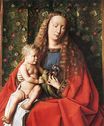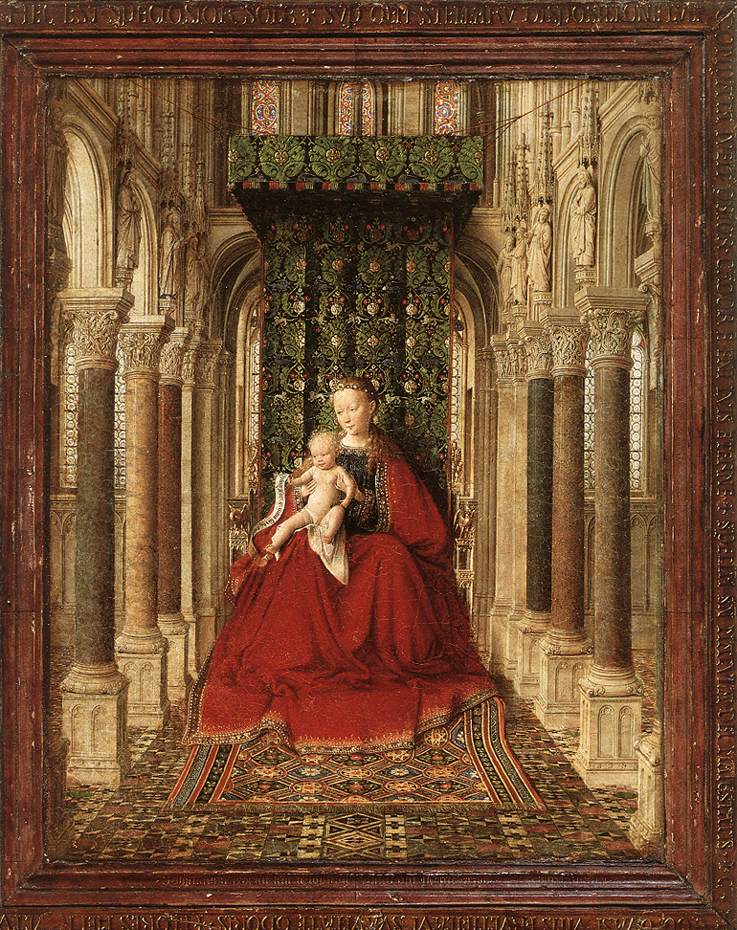Jan van Eyck - Small Triptych, central panel 1437
 |
 |
 |
 |
 |
 |
 |

Small Triptych, central panel 1437
33x27cm oil on wood
Gemäldegalerie Alte Meister, Staatliche Kunstsammlung, Dresden, Germany
<< Previous G a l l e r y Next >>
From Wikipedia, the free encyclopedia:
The Dresden Triptych (or Virgin and Child with St. Michael and St. Catherine and a Donor, or Triptych of the Virgin and Child) is a very small hinged-triptych altarpiece by the Early Netherlandish painter Jan van Eyck. It consists of five individual panel paintings: a central inner panel, and two double-sided wings. It is signed and dated 1437, and in the permanent collection of the Gemäldegalerie Alte Meister, Dresden, with the panels still in their original frames. The only extant triptych attributed to van Eyck, and the only non-portrait signed with his personal motto, ALC IXH XAN ("I Do as I Can").[a 1] the triptych can be placed at the midpoint of his known works. It echoes a number of the motifs of his earlier works while marking an advancement in his ability in handling depth of space, and establishes iconographic elements of Marian portraiture that were to become widespread by the latter half of the 15th century. Elisabeth Dhanens describes it as "the most charming, delicate and appealing work by Jan van Eyck that has survived".